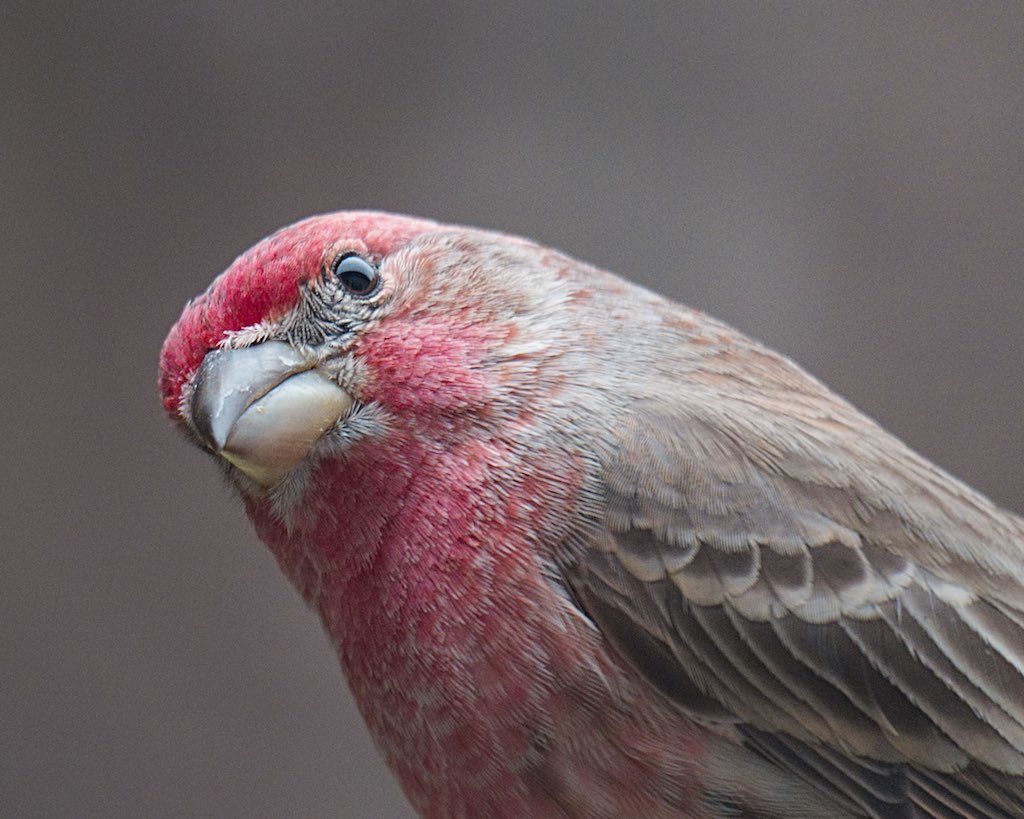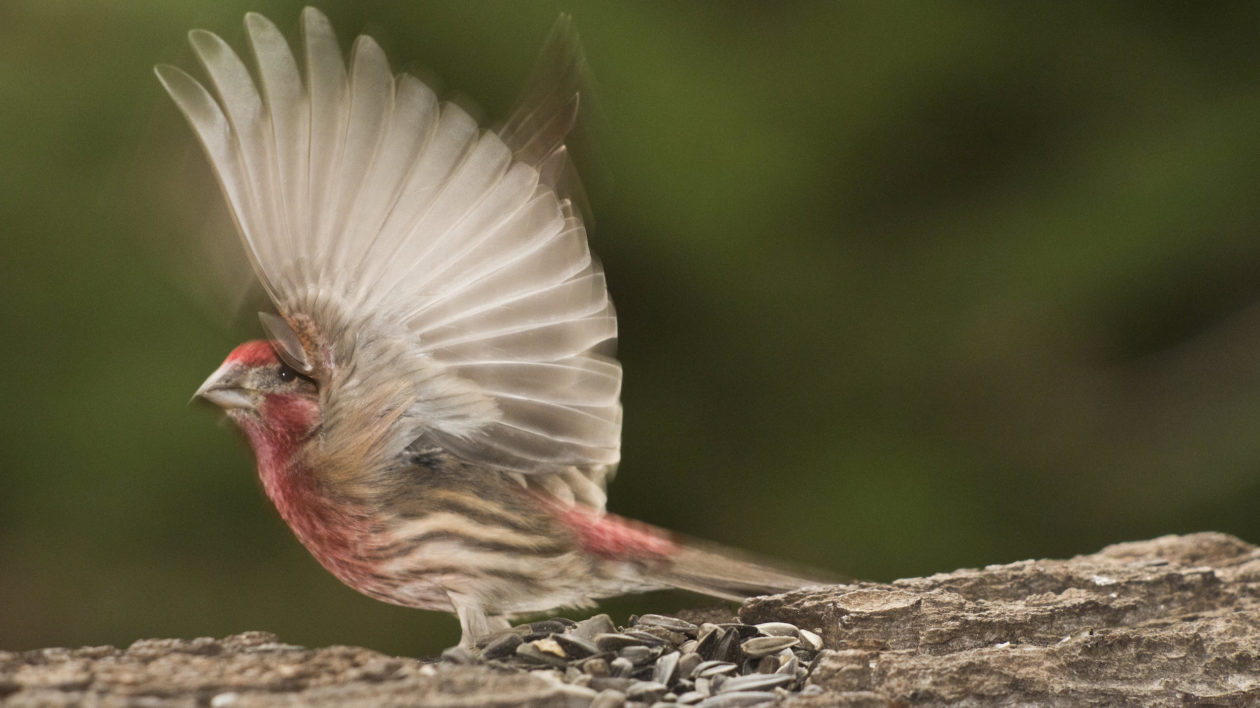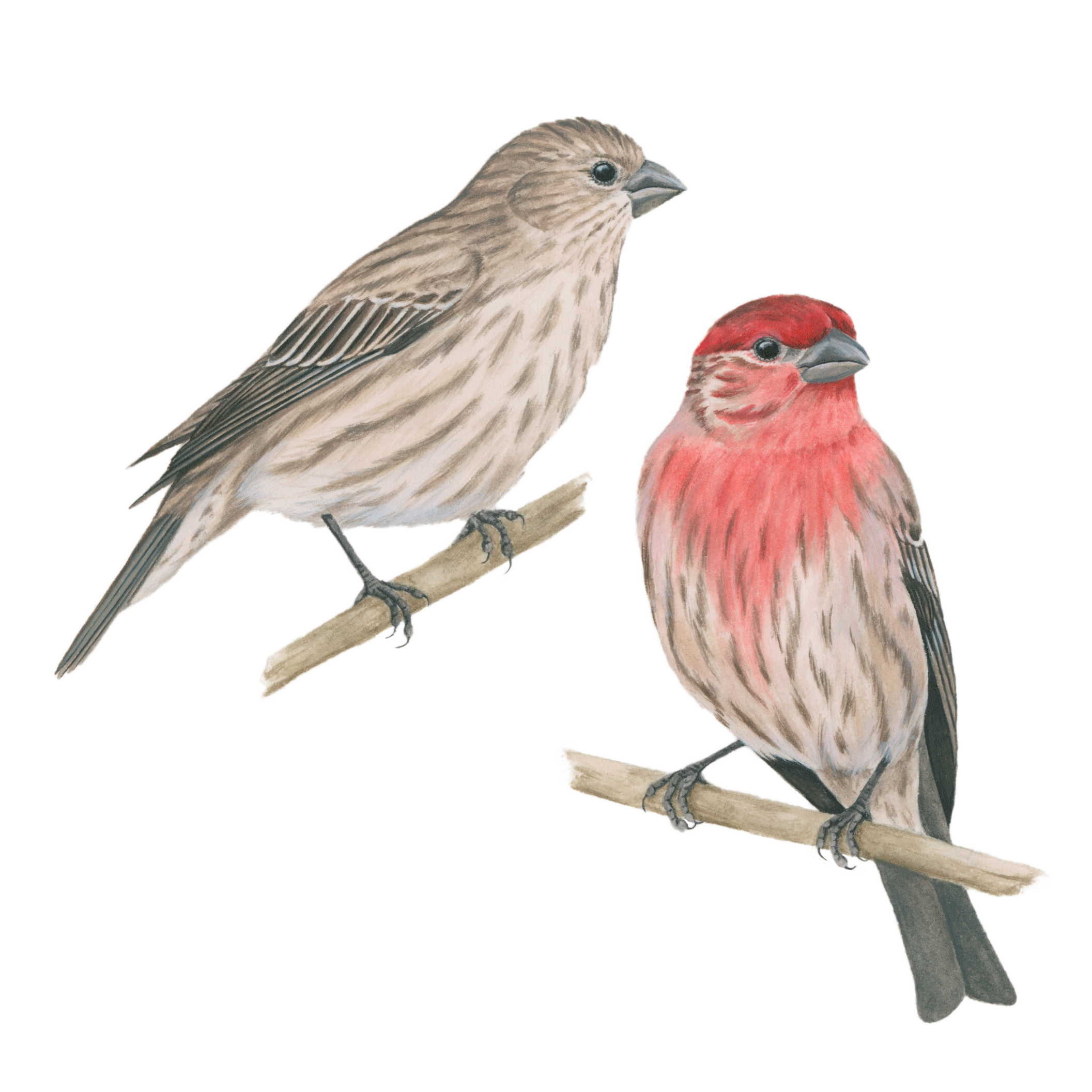House Finch sightings are a common occurrence in residential and urban areas across the United States and Mexico. These small songbirds, with their streaky gray-brown plumage, have a special affinity for bird feeders, especially when filled with black oil sunflower seeds. When it comes to appearance, the males sport a vibrant red head and breast, while the females maintain a more consistent gray-brown coloring. Typically seen in small flocks, House Finches can often be found foraging on the ground or enjoying the water features of bird baths. With a diet consisting mainly of weed seeds, fruit, and buds, they are resourceful creatures, building nests in various nooks and crannies of porches and out-buildings. Known to be monogamous, House Finches raise multiple broods during the nesting season and have an average lifespan of over 10 years. In certain regions, they may embark on migratory journeys. It’s worth noting that these beautiful birds can be susceptible to avian conjunctivitis, a disease that causes swelling of the eye tissues.
Common House Finch Sightings in Residential and Urban Areas

Introduction
In residential and urban areas across the United States and Mexico, it is common to spot the vibrant plumage and melodious song of the House Finch (Haemorhous mexicanus). These small songbirds have adapted well to human settlements, finding ample resources and suitable habitats amidst our bustling cities and suburbs. In this article, we will delve into the behavior, appearance, feeding habits, nesting behaviors, mating rituals, migration patterns, and potential health issues faced by these delightful avian residents. Understanding the fascinating lives of House Finches can provide us with a deeper appreciation for the wildlife that coexists harmoniously with us.
Behavior and Habitat
House Finches are social birds, often observed in small flocks that roost and forage together. They display a gregarious nature, frequently seen engaging in playful interactions with one another. These birds find a harmonious balance in cohabiting with humans, as they have successfully adapted to our urban and residential habitats. House Finches thrive in areas with a mix of vegetation and open spaces, such as suburban gardens, parks, and even urban streets lined with trees. By utilizing the resources present in our built environments, these adaptable birds have flourished alongside us.
Appearance
The House Finch boasts a plumage characterized by streaks of gray-brown, which gives them a subtly mottled appearance. This coloration serves as excellent camouflage, enabling them to blend effortlessly with the trees and shrubs they frequent. However, it is the vibrant red head and breast of the males that truly catch the eye. Females, on the other hand, exhibit a more understated gray-brown color throughout their feathers. This sexual dimorphism adds an element of visual intrigue to the House Finch’s appearance.
Feeding Habits
House Finches are opportunistic feeders, adapting their diet based on the available resources in their environment. Weed seeds, fruit, and buds make up the bulk of their main diet preferences. Their ability to eat a wide variety of seeds has played a significant role in their successful adaptation to urban and residential areas. When foraging, House Finches primarily feed on the ground, where they can easily access an abundance of fallen seeds and discarded fruits. Their feeding habits are both efficient and adaptable, allowing them to thrive in diverse environments.

Attraction to Bird Feeders
One of the reasons House Finches have become common sights in residential and urban areas is their attraction to bird feeders. These delightful songbirds are particularly fond of black oil sunflower seeds. By strategically placing bird feeders in our yards, gardens, and balconies, we can enjoy the daily presence of House Finches. Their lively presence and cheerful song add a touch of natural beauty to our urban lives, enhancing our connection to the wildlife around us.
Interactions with Water Features
House Finches are not only attracted to food sources but also to the provision of water. Bird baths become oases of refreshment, prompting House Finches to visit and drink from them. Apart from quenching their thirst, the accessibility of water sources also plays a vital role in House Finch hygiene. Bathing in bird baths helps these songbirds maintain the health and cleanliness of their feathers, ensuring optimal flight and insulation in various weather conditions. By providing water features in our outdoor spaces, we can encourage House Finches to visit regularly, creating opportunities for observation and appreciation.

Nesting Habits
When it comes to nesting, House Finches exhibit a resourceful and adaptable approach. They tend to build their nests in nooks and crannies of porches, eaves, and out-buildings. These cozy hideaways provide a safe haven for their young, sheltered from the elements and potential predators. House Finches construct their nests using a combination of twigs, grass, and other plant fibers, forming a sturdy cup-shaped structure. By observing and respecting the nesting habits of House Finches, we can play a role in preserving their delicate homes.
Mating and Breeding
House Finches are monogamous birds, establishing pair bonds that can last for several breeding seasons. Their mating rituals involve the male attracting the female through vibrant displays of song and dance. Once a pair bond is formed, the female will build a nest, carefully selecting a suitable location. House Finches are known to produce multiple broods in a single nesting season, ensuring the continuation of their lineage. By respecting the sanctity of their breeding and nesting periods, we can contribute to their successful reproduction and population growth.

Longevity and Migration Patterns
House Finches have the potential to live over 10 years in the right conditions, provided they have access to sufficient resources and suitable habitats. While migration patterns can vary depending on geographical regions, some House Finches do undertake seasonal migrations. These migrations are often driven by the availability of food and optimal breeding conditions. By preserving and protecting their habitats, including their foraging and roosting areas, we can support their longevity and adaptability in our ever-changing environments.
Health Issues
Unfortunately, House Finches are not immune to health issues, with avian conjunctivitis being a notable concern. Avian conjunctivitis is a contagious disease caused by a bacteria called Mycoplasma gallisepticum. It affects the tissues surrounding the eyes, leading to swelling, discharge, and potential vision impairment. The disease can spread rapidly within populations, impacting House Finches’ overall health and well-being. To mitigate the risk of avian conjunctivitis, it is crucial to maintain clean bird feeders, bird baths, and nesting areas. Regular cleaning and disinfection of bird-feeding stations and adherence to proper hygiene protocols can help mitigate the transmission of this disease among House Finches.
In conclusion, House Finches have become cherished residents in residential and urban areas due to their adaptability, vibrant appearances, and delightful behaviors. By understanding their behavior, appearance, feeding habits, nesting patterns, mating rituals, migration patterns, and potential health issues, we can foster a deeper appreciation for these beautiful songbirds. As we continue to coexist harmoniously with House Finches in our shared spaces, let us endeavor to create environments that prioritize their well-being and conservation. Through our actions, we can ensure that the melodious songs and vibrant plumage of House Finches continue to grace our neighborhoods and urban landscapes for generations to come.

Leave a Reply